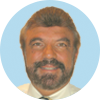Concerning education, 28% had either one or two years of formal training, and 53% had received three or four years formal schooling. Only 7% had five to seven years of schooling.
At the time the survey was conducted, just 59% of the acupuncturists practiced full time, which was defined as more than 30 hours per week. Of these practitioners, 81% had practiced less than 10 years.
In terms of the numbers of patients seen by an acupuncturist, the statistics are less than stellar. Fifty-two percent of the practitioners saw less than 15 patients daily; 28% of practitioners saw less than six patients daily. Only 16% of acupuncturists saw in excess of 15 patients in a day. To bring it closer to true perspective, 60% of acupuncture practitioners saw less than 30 patients weekly. Only 13% saw between 50 and 80 patients a week.
The average fee charged by acupuncturist was $75 for the first visit, with $45-$50 per visit being typical. Thirty-two percent of the respondents stated that 75% of their patients paid cash. Forty-two percent of the respondents stated less than 25% of their patients were covered by private insurance.
Fifty-eight percent of practitioners reported that their acupuncture practice was their sole source of income. Income reported is for the gross amount before expenses. Forty percent earned less than $30,000 yearly, with 19% earning $30,000-$50,000; twenty-four percent stated they grossed $51,000-$100,000; and 18% earned more than $100,000 in yearly gross income.
Sadly, it was reported that a full 40% of the respondents reported overheads as high as 60% of their gross revenues, with a full 24% reporting overhead expenses greater than 60% of their gross incomes. Bear in mind that with the very low gross income, the overhead percentage is greatly increased.
The use of disposable needles was reported by 91% of respondents. A full 71% of practicing acupuncturists use commercially manufactured herbal formulas. Sixty-three percent performed ear acupuncture; 53% performed massage; 53% performed moxibustion; 45% used counseling regarding emotional issues; 44% taught breathing exercises; 41% performed electroacupuncture; 37% performed cupping; 31% performed physiotherapy modalities; 24% prescribed Tai Chi or Qi Gong; and 19% performed muscle testing.
The conditions seen and reported by acupuncturist are: sciatica; low back pain; bursitis; acute muscular strain; tendinitis; migraine; tension headaches; insomnia; allergic rhinitis; bronchitis; pre-menstrual syndrome; immune disorders; sinus infection; pain of fractures; osteoporosis; muscular atrophy; myocardial infarction; Raynaud's syndrome; post CVA; cranial nerve disorders; hyperactivity; attention deficit syndrome; encephalopathy; head injury; cerebral palsy; epilepsy; Parkinson's disease; cardiac murmur; pneumonia; asthma; emphysema; alopecia; appendicitis; ulcers; hernias; hemorrhoids; parasitic infections; kidney infections; bladder infection; infertility; prostate disorder; obesity; pituitary disorder; diabetes; ear infection; measles; mumps; chicken pox; whooping cough; HIV infection; AIDS; and cancer.
These statistics are for those practitioners of acupuncture only; they do not represent other medical/chiropractic practitioners who use acupuncture as an adjunct to their practice.
As acupuncturists aggressively seek licensure in all states, we are now seeing the brick throwing, mud-slinging tactics of this new profession to discredit those DCs who have added acupuncture to their practice through state board regulated graduate school. Please remember, acupuncturists: DCs who have added acupuncture to their armamentarium do not have to retake anatomy, physiology and the multitude of basic science courses required in the acupuncture college. They have already done that! It is not necessary for us to sit in a college for 2,400 hours for the express purpose of retaking classes we have already been examined in by the national and state boards. Also understand that all acupuncture is not traditional Chinese medicine (TCM); there are numerous styles of acupuncture, just as there are different martial arts forms and chiropractic techniques.
The practice statistics for doctors of chiropractic are much more impressive than the ones we have just examined. I can only sense a severe case of sour grapes emanating from the acupuncturists who currently are doing everything they can politically and legislatively from allowing DCs to include acupuncture into their practice act.
A Warning to All States That Do Not Currently Include Acupuncture into Your Practice Act
Do it now. Time is of the essence. The acupuncture profession is dedicated and is quickly becoming a major thorn in the side of chiropractic nationally. As acupuncture becomes more and more a generally accepted therapy, it is of the utmost importance we incorporate it into our practice rights. Currently, more than 60% of the chiropractic state boards in the United States regulate the practice of acupuncture.
John A. Amaro DC, FIACA, Dipl.Ac.
Carefree, Arizona, USA
Click here for previous articles by John Amaro, LAc, DC, Dipl. Ac.(NCCAOM), Dipl.Med.Ac.(IAMA).





